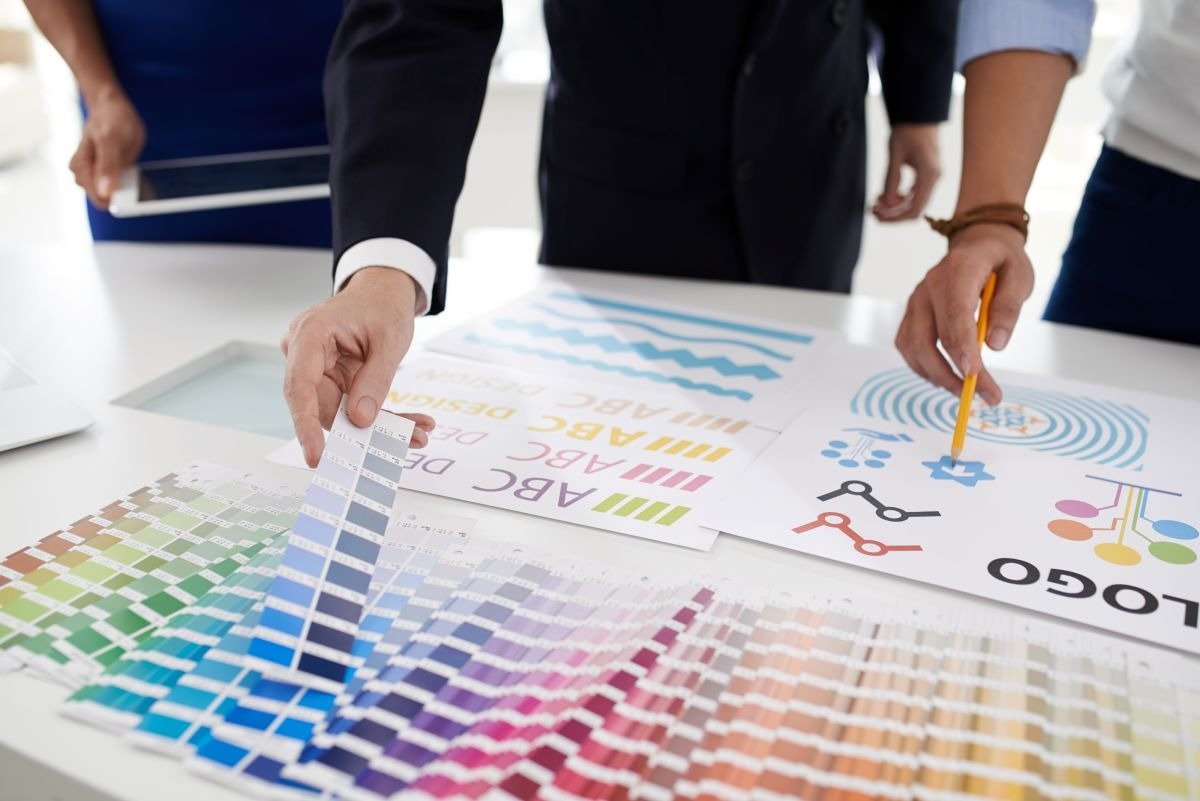How Do Logo Colors Influence Purchase Decisions?

What makes you step into a store while walking past it? Or
why do you suddenly click on a product while browsing a website? The answer
often lies in logo colors and the emotions they evoke in us! Yes, colors
are not just visually appealing elements; they are also the hidden champions of
sales strategies as colors that attract customers. But are sales
colors really that powerful? Have you ever thought about how a color can
influence human psychology?
How Do Colors Affect Sales and Marketing?
The power of colors has been a widely discussed topic in the
marketing world for years. The meaning of colors in marketing is so deep
that even a slight variation in tone can change brand perception. For example,
it is no coincidence that almost all fast-food chains use red and yellow
tones—these colors evoke feelings of hunger and urgency!
Similarly, colors that attract money vary by
industry. Luxury brands prefer black and gold tones, while technology companies
rely on the trust-inducing effects of blue and white. Choosing colors by
sector is a critical step to ensure your brand conveys the right message.
Which Colors Boost Sales?
Colors are not chosen purely for aesthetics. They are
powerful tools that reflect your brand’s personality and convey the right
message to your customers. When logo colors are chosen correctly, they
can increase your sales and strengthen brand recognition. Additionally, each
color has a unique impact. Here are some colors and how they influence sales:
The Impact of Blue on Sales
Blue represents trust and loyalty. That’s why banks and tech
giants frequently use this color! Considered one of the best logo colors,
blue creates a sense of security in customers, positively influencing purchase
decisions.
The Impact of Red on Sales
Red triggers urgency and stimulates appetite. That’s why you
often see it on discount banners and in fast-food branding. When discussing the
importance of colors in sales, red is definitely at the top of the list.
The Impact of Black on Sales
Black signifies luxury and sophistication. Premium brands
use this color to add value to their products. Luxury brands that want to
achieve logo color harmony often combine black with gold or silver for
an elegant effect.
The Impact of White on Sales
White symbolizes simplicity and cleanliness. It is
frequently used in the health and tech sectors. When paired with minimalist
designs, it stands out among colors that attract customers.
The Impact of Green on Sales
Green represents nature and tranquility. Organic brands and
eco-friendly companies prefer this color. Additionally, since it is one of the colors
that attract money, it is also used in the financial sector.
The Impact of Pink on Sales
Pink evokes feelings of romance and care. It is commonly
used by cosmetic and fashion brands. When analyzing logo colors and their
meanings, pink is particularly effective for targeting a female audience.
The Impact of Orange on Sales
Orange symbolizes energy and fun. Young and dynamic brands
use this color to grab attention. It also holds a special place among sales
colors as it promotes activity and movement.
The Impact of Purple on Sales
Purple represents creativity and royalty. It is frequently
used in art and luxury consumer goods. When considering the meaning of
colors in marketing, purple conveys a sense of mystery and quality.
The Importance of Colors in E-Commerce
When shopping online, the impact of colors becomes even more
evident. The color scheme of a website can influence how long a user stays and
even the cart addition rate. The importance of colors in sales is taken
very seriously by brands, as it directly affects conversion rates.
For instance, shades of blue instill trust, while orange
"Buy Now!" buttons grab attention. Just like logo color harmony,
website colors also play a critical role in boosting sales.
 Türkçe
Türkçe English
English